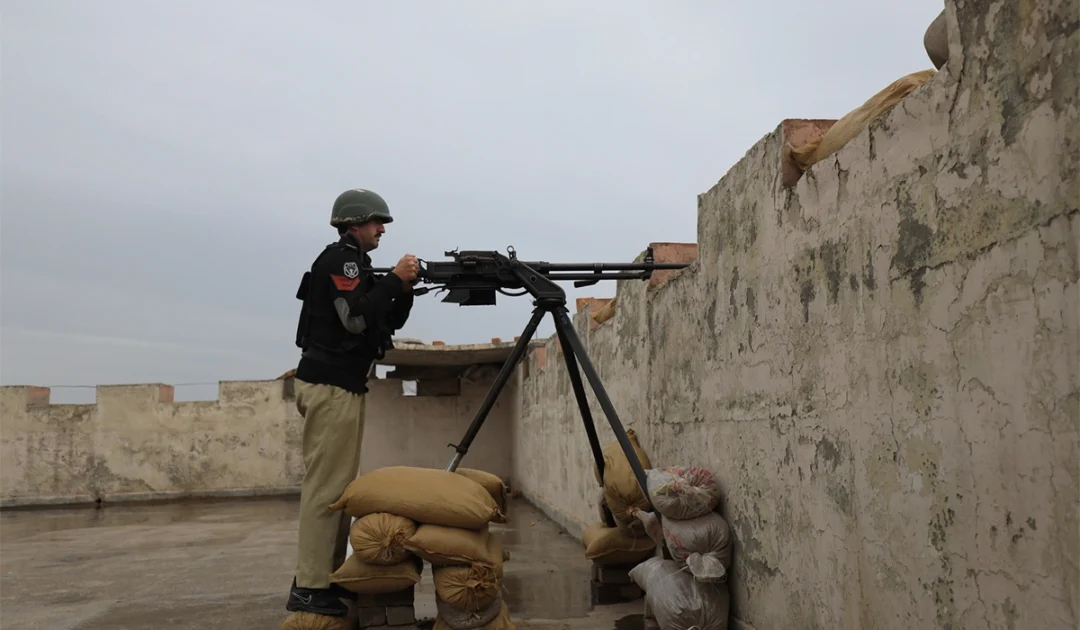- Web Desk
- Today
Despite early warnings, monsoon devastation unfolds: who’s to blame?
-
- Syeda Masooma
- Jul 26, 2025

Even with advance alerts from the Pakistan Meteorological Department (PMD), and preemptive coordination by the National Disaster Management Authority (NDMA) and Provincial Disaster Management Authorities (PDMA), Punjab and Khyber Pakhtunkhwa continues to reel under the devastation of this year’s monsoon.
According to a report released by Punjab PDMA, over 143 people have lost their lives in just 40 days, and 514 more have been injured. Over 120 cattle have perished due to roof collapses, flooding, and rain-related incidents as well.
Also read: Rainfall in Punjab: traffic police, provincial govt on high alert
Meanwhile, in Khyber Pakhtunkhwa, PDMA reported three people, including two children, died in one day with five more individuals reportedly injured in rain-related incidents. Previously, in Battagram, the collapse of a house roof claimed 27 lives, and additional damage was recorded in Buner, where nine cattle were killed. Six homes were completely destroyed and 16 partially damaged across various districts in Khyber Pakhtunkhwa.
The scale of destruction, despite initial warnings and preparations has raised urgent questions: if authorities had knowledge of the impending rains, why has the damage been so extensive?
THE PREPAREDNESS PARADOX
Despite receiving weather forecasts, the provincial machinery seems to have struggled to translate that information into effective on-ground measures. While the NDMA and other related authorities claim to have “alerted all relevant departments,” the damage seems to continue unbridled.
“There is medium-level flooding in the Indus River at Chashma and Taunsa, and low-level flooding at Kalabagh and Tarbela,” said Punjab PDMA DG Irfan Ali Kathia. “We are monitoring water levels in all major rivers, and urban flooding remains a high possibility.”
Yet, in many cities, stormwater drains remained choked, urban planning failed to account for floodplains, and emergency response teams were visibly overwhelmed.
Also read: Punjab launches home tree plantation initiative
Likewise, Punjab Chief Minister Maryam Nawaz and Khyber Pakhtunkhwa Chief Minister Ali Amin Gandapur have put dedicated resources, manpower and funds to counter the impact of rainfall and floods. District authorities across both provinces remain on high alert, with loaders, lifters and other necessary machinery at their ready disposal as well. Despite that, the damage to livestock, infrastructure and human lives continues to pile up with every rain spell.
HUM News English reached out to WASA and KP PDMA.
WASA BLAMES PUBLIC APATHY
WASA, the city’s primary water utility and drainage authority, sees a root cause different from any lack of preparedness: public indifference.
“The main issue is the lack of civic sense,” said Abuzar, a WASA representative. “People don’t take warnings seriously. They remove manhole covers, let their children play in floodwaters, and ignore alerts altogether.”
While there’s some merit to these observations, public safety behavior does remain a challenge. Experts say this line of reasoning oversimplifies the problem. Public cooperation is important, but in a country where emergency infrastructure is inadequate and drainage systems are underdeveloped, the burden of disaster preparedness cannot rest solely on individuals.
KHYBER PAKHTUNKHWA SHARES CONCERNS
Khyber Pakhtunkhwa’s authorities concur with Punjab’s WASA. PDMA Spokesperson Anwar Shahzad said, “Despite the imposition of Section 144 in vulnerable areas across Khyber Pakhtunkhwa, aimed at restricting access to riverbanks and flood-prone zones, tourist inflows to northern regions have not slowed.”
He said that the timing of the monsoon season with summer vacations has complicated enforcement, as thousands continue to travel to scenic but hazardous destinations.
Despite this, officials from the Tourism Department, patrolling police, and rescue teams, including divers, are on high alert, working continuously to prevent accidents, Shahzad said, adding, “We’ve deployed all available resources, but public cooperation remains a serious challenge”.
BEYOND DAMAGE CONTROL
Since climate change induced heavy rainfall and potential flooding is not a distant reality anymore, NDMA, PDMAs and other institutions concerned need to expand their role from issuing regular advisories and post-disaster relief. This reactive rather than proactive approach compounds the damage year after year.
Also read: Multiple landslides in Murree; rescue operations underway
Continuous deforestation, even in areas such as the federal capital, is adding salt to the wound. This year, a father and daughter were swept away by floodwaters in DHA Phase 5, Islamabad – one of the poshest areas of the city.
Pakistan now needs long-term investment in infrastructure, stricter enforcement of environmental laws, and above all, a cultural shift, from both authorities and the public, toward preparedness, responsibility, and prevention.
Additional reporting by Maira Sulaiman





